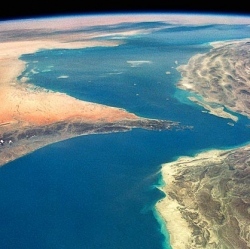
SpaceX will be putting all of its development into a 150 ton payload reusable rocket. This will be ready around 2020-2022. Bigelow BA 2100, is a conceptual design for a larger, heavier, and more capable expandable space station module, or interplanetary human transport module, by Bigelow.
The larger BA 2100 would extend the volume and capabilities of the BA 330 module, which is under development as part of the Bigelow Commercial Space Station. As with the BA 330 module, the number in the name refers to the number of cubic meters of space offered by the module when fully expanded in space.
The weight of the BA 2100 could be as low as 65 to 70 tonnes (143,000 to 154,000 lb), but would more likely be “in the range of 100 metric tons”. If the weight of BA2100 was 75 tons or less, then two could be launched with each Spacex BFR launch.
It is substantially larger than the BA 330, with the docking ends of the module alone estimated at approximately 25 feet (7.6 m) in diameter. The concept model showed the docking ports at both ends. The BA 2100 would require the use of a super-heavy-lift launch vehicle–and would require an 8-meter (26 ft) fairing for launch, such as the Space Launch System, the Block II version of which would have a 130-tonne (290,000 lb) payload capacity.
Pressurized volume of single BA 2100 module is 2,250 cubic metres (79,000 cu ft), compared to 931 cubic metres (32,900 cu ft) volume of the whole International Space Station as of May 2016.
The pressurized volume of a 20-ton B330 module is 330 cubic meters compared to 106 m3 of the 15 ton ISS Destiny module. Thus B330 offers 210% more habitable space, with an increase in mass of only 33%. Seven of the V330 modules could be launched with each Spacex BFR. This would be 2310 cubic meters per launch. This would still be 2 and half times the volume of the International Space station. The Spacex BFR itself will only have cubic meters less volume than the International Space station.
Bigelow also claims that the module provides radiation protection equivalent to, and ballistic protection superior to, the International Space Station.
A few launches of the reusable Spacex BFR will be able to make giant space stations and large habitat deep space transports.
